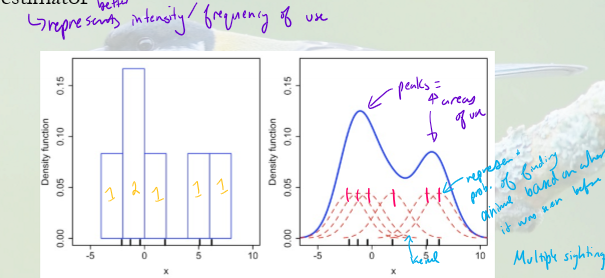Home Range & Habitat Selection
1/3
There's no tags or description
Looks like no tags are added yet.
Name | Mastery | Learn | Test | Matching | Spaced |
|---|
No study sessions yet.
4 Terms
How can home ranges be defined?
as the area traversed by an individual for food, mating, caring, not occasional explorations
The part of an animal’s cognitive map that it updates
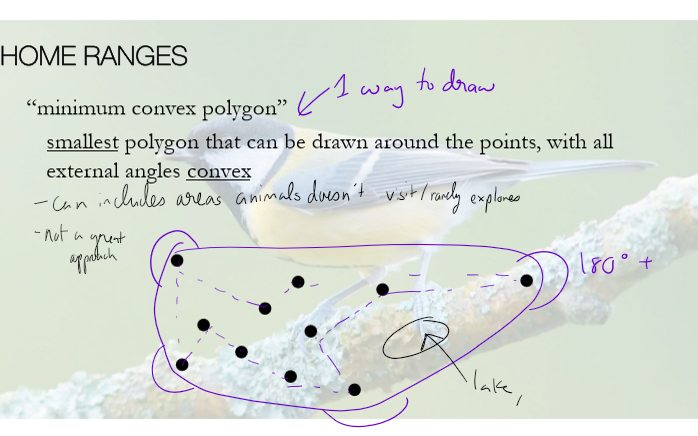
What are the 2 ways home range maps are drawn? Describe them.
minimum convex polygon - smallest polygon that can be drawn around a point with all external areas convex
Kernel estimator - represents the intensity/frequency of land use using kernels that increase the likelihood of an animal being seen in that area
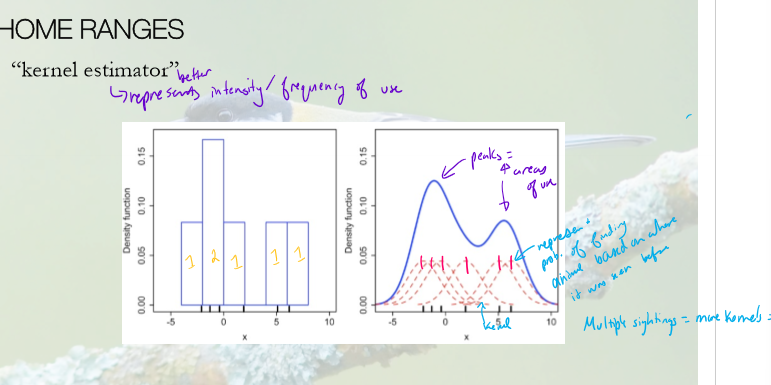
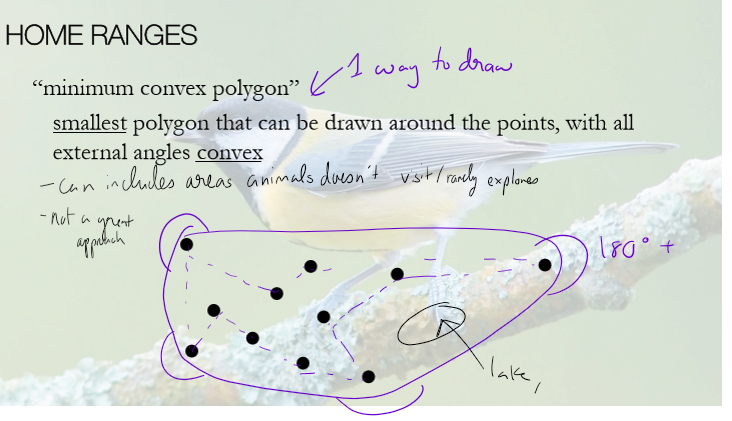
What are some issues with the minimum convex polygon approach to drawing home ranges?
can include areas that animals don’t visit or rarelt explore, such as lakes, or just include areas that the animal doesn’t visit (due to the convex rule)
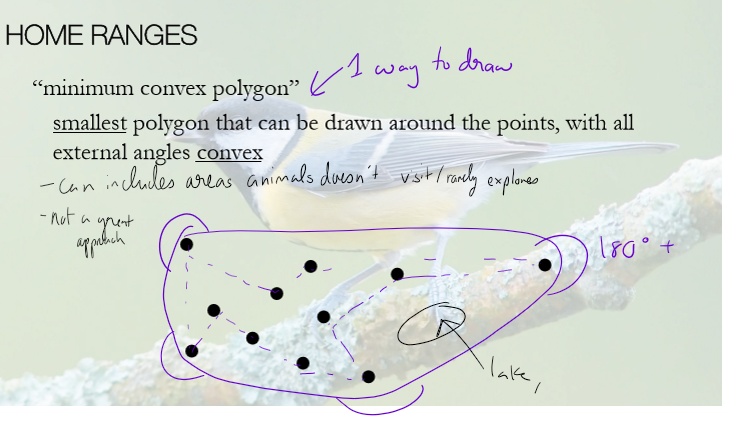
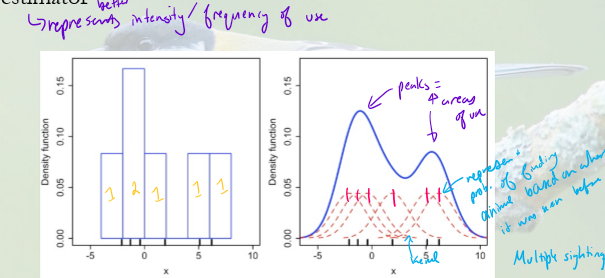
How do kernel estimators for defining home ranges work?
collects data on where an animal was seen, converted to a “kernel"
each kernel represents the probability of finding an animal in that area
multiple sightings = multiple kernels = more likely to see that animal there
creates map where peaks represent areas of higher use
